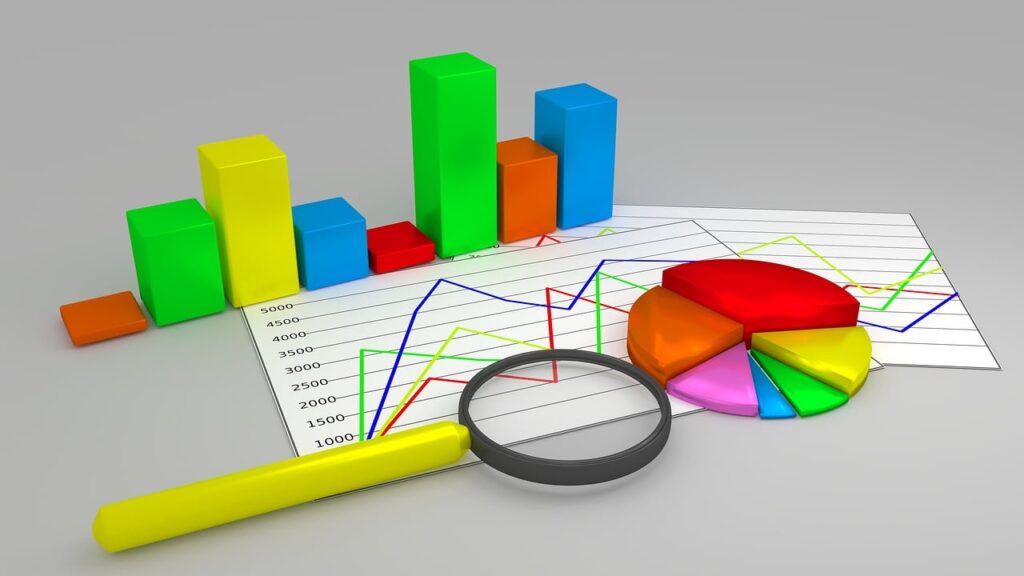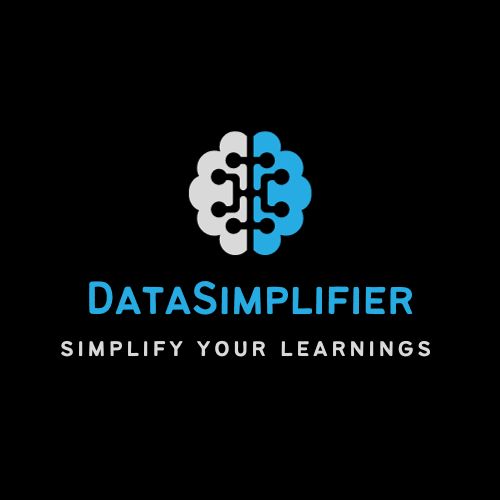I. Introduction
Python has become the most imperative programming language in the realms of data analytics and data science with a growing pace in today’s high-tech world. With the progress data-driven decisions are gaining precedency in industries and bodies, it becomes very important for students and professionals to understand how Python is applied in data analytics. With easy syntax and powerful libraries, Python has become the preferred language for those who want to tap into the data’s power. It will, therefore, endow you with the ultimate insights into how Python is applied across different domains, ensuring you have all the knowledge you need to excel in your career.(Python in Data Science)

For Indian students and working professionals looking forward to interviews or advancement in their careers, it is important to know how Python fits into the overall landscape of data science. Whether you are at a starting point or working on sharpening your skills, understanding why Python is good for data science might just make a world of difference to you. The Indian job market is changing like wildfire. The case in point is the increasing demand for professionals skilled in data analytics and data science in the Indian job market. As per NASSCOM, the Indian analytics industry is going to hit $16 billion by 2025, which creates enough avenues for candidates who know Python.
This article will be devoted to how Python is used in data analytics, data science, big data, and data engineering, repeating why it is needed in the respective fields. By the end of this article, you’ll have a full understanding of how Python relates to data science and the many ways it will be to your advantage. Whether you’re interested in data analysis, machine learning, or data engineering, this guide is going to arm you with valuable insights that will be helpful in your professional journey.
II. The Role of Python in Data Analytics
A. What is Data Analytics?
Data analytics is the science of analyzing raw data to derive conclusions regarding that information. It assumes a pivotal role in today’s data-driven world. It enables businesses and organizations to make the right kind of decisions to run their operations in the best possible ways. In areas of customer behavior, optimum operation, and other aspects like finance, healthcare, and marketing, data analytics forms an integral part. It is found most efficiently capable of performing complex data analyses in the powerful and versatile programming language Python.
For instance, in the retail industry, retailers use data analytics to understand the sort of buying trends, optimize inventories, and improve experiences by their customers. With transaction data, it’s easy for a retailer to know how popular a certain product line is and the days they can sell the most to make better sales decisions.
B. How Python is Used in Data Analytics
Python has a lot of packages that can be used specifically for data analytics. It has a number of libraries in which the actual manipulating and analysis work gets easier for the users. Some of the most common are:
Pandas: This library offers up a data manipulation and analysis library with data structures such as DataFrames. DataFrames are the libraries through which users can clean, filter, and aggregate data. For example, a data analyst may load sales data from a CSV file using Pandas, remove duplicates, and then summarize sales by product category.
NumPy: It is well known for carrying out powerful numerical computation as well. It is popularly applied when it involves the data handling of large datasets and doing the mathematics. NumPy allows the creation of arrays and matrices, making mathematical operations easy to do. You can easily run statistics like mean, median, and standard deviation on sales numbers using NumPy.
Matplotlib & Seaborn: These are visualization libraries, which enable users to build static, animated, and interactive plots for understanding data trends. Visualizations are really important for presenting insights from data to stakeholders. For instance, a data analyst will use Matplotlib for building a bar plot of sales performance by region.

For instance, in generating code regarding sales data analytics, one can sanitize the dataset using Pandas by eliminating duplicate and filling up missing values. Then, one can go ahead to compute statistical metrics using NumPy and finally produce plots in visualizing such sales trends over time. Here is where practical applications of Python reveal the strength of the language used in data analytics.
C. Is Python Required in Data Analytics?
The demand for professionals skilled in Python is quite high. Most data analyst job postings usually require proficiency in Python. This is mainly due to the fact that the versatility and ease with which Python allows analysts to perform a large number of jobs in data related efficiently. Further, companies opt for candidates who can make use of Python for automating recurrent jobs and add more efficiency to productivity.
Data analyst roles feature in the top 10 emerging jobs across India, with more than half of the employers looking to hire people proficient in Python, according to LinkedIn’s 2023 Emerging Jobs Report. As such, it represents the need for Python skills within this analytics job market.
III. Impact of Python in Data Science
A. What is Data Science?
Data science encompasses statistics, data analysis, and machine learning, among others, to extract useful insights from data. It is related not only to data analysis but also to prediction and recommendations. The use of data science can be seen in the conduct of more and more tasks based on data in organizations.
With the boom of data science across finance, health care, and e-commerce sectors, companies in India are trying to exploit available data science to gain an edge over others. For example, an e-commerce site may use data science to analyze what a customer does, optimize pricing strategies, and roll out campaigns in personalized marketing. This trend easily translates to an inordinate demand for skilled professionals who can solve complex problems using data.
B. How Python is Used in Data Science
Python is dramatically favored in the data science ecosystem. Its richness in libraries enriches it further as a language:
Scikit-learn: This library is very useful for applications of the machine learning algorithm. It gives its users tools for classification, regression, clustering, and much more. A data scientist may even implement Scikit-learn so that he can develop a predictive model in forecasting customer churn from a historical database.
TensorFlow and Keras: These libraries become your go-to instruments for building neural networks and deep learning models. They also help solve some of these complex problems easily, like image recognition and natural language processing. They can develop models to classify images or analyze sentiment in text data.
Statsmodels: This is the library for statistical modeling and hypothesis testing. It makes data science able to do regression analysis and time series forecasting, hence gathering insight from data.
For example, a data scientist would use Python with all the libraries in reading social media feedback of customers to apply natural language processing so that sentiments can be classified as positive, negative, and neutral in nature. This, in turn, will be used for the update of marketing strategies and product development streams accordingly.

C. Do data scientists use Python?
Statistics indicate that it is the most employed programming language for data science. According to a survey conducted by Kaggle, a network wherein about 83% of data scientists claimed using Python on an everyday basis to carry out their work. This scope of adoption is due in part to flexibility and how it integrates well with other tools and platforms, making it an essential competency for those who want to become data professionals.
Another significant plus point is the support community for Python. Online resources, tutorials, and forums are available that enable learners to seek support and guidance easily. Thus, the support within the community will ensure professionals can continuously update their skills and stay at par with the latest trends in data science.
IV. Python for Big Data Data Engineering
How is Python Used for Big Data
With the creation of enormous volumes of data, more advanced data processing as well as analytical tools become the need of the hour. One of the important constituents of the big data landscape is Python, due to being compatible with myriad big data technologies.
Apache Spark: Apache Spark is an open-source in-memory engine for fast big data processing. The PySpark library allows data scientists and engineers to write their Spark applications using Python for distributed data processing with big datasets. Example: A company may use PySpark to analyze clickstream data captured when its users clicked on its website; companies get real-time insights about their users.
Dask:
A parallel computing library for scaling up one’s computation, data analysis, or any single program beyond multiple cores, even across a cluster of machines. With numerous integrations and interfaces with Pandas and NumPy in a seamless manner, this helps to execute the computations on larger-than-memory datasets-for instance, processing great scientific research data that cannot be conveniently done by traditional tools.
Apache Kafka: Using Kafka with Python is an open-source distributed event-streaming platform, thereby usable in managing real-time feeds of data. This would be a great necessity when the applications need to deliver real-time analytics such as fraud detection in finance.
For instance, a data engineer can use Dask for processing log data terabytes from a web application to generate insights faster and efficiently, important for operational decision-making.
B. Python application in Data Engineering
Data engineering mainly focuses on the designing and building of system and infrastructures in gathering, storing, and analyzing data. For this reason, Python is one of the most favored languages because it is simple and very effective.
C. Common Uses of Python Programming for Extracting, Transforming, and Loading Python: ETL processes involve extracting data from sources, transforming it to work with the programming language, and loading it into databases. Libraries such as Pandas and SQLAlchemy help achieve this. For example, a data engineer might write Python scripts to extract data from an API, transform the same into structure, and load it into a relational database for analysis.
With tools such as Apache Airflow and Luigi, a data engineer can define and schedule and monitor complex data workflows. Writing Python scripts automates processes so that data streams in, getting constantly processed and ready to be analyzed. An example of a task for a data engineer could be an Airflow pipeline that extracts sales data from the sources, transforms that data according to business rules, and loads it into a data warehouse every night. This saves time, negates the potential for human error in processing data, and so forth.
It ensures data quality. The ETL pipeline can be implemented through Python during the data validation checks and cleaning processes. For instance, a data engineer would write scripts to identify missing values, handle them, remove duplicates, and standardize formats. Maintaining high-quality data guarantees that the organization can guarantee the accuracy and reliability of its information.
C. How Much Python Should I Learn for Data Science?
The amount of Python programming you will need will depend somewhat on what you are trying to do in data science or data engineering. Here are a few rough guidelines:
Basic Level: For entry-level positions, they would want at least a good understanding of Python syntax as well as the data structures such as lists and dictionaries, simple libraries such as Pandas and NumPy. Understand how to manipulate data and apply basic techniques of data visualization.

At intermediate, it would require machine learning libraries, like Scikit-learn, and data visualization tools, like Matplotlib or Seaborn. How to implement ML algorithms and interpret the results is critical for a mid-level position.
Advanced Level- All advanced Data Engineering and Advanced Data Science role require experience of using frameworks such as TensorFlow for deep learning, and have experiential working with big data technologies can be amplified by knowledge of cloud platforms such as AWS or Azure along with other data storages solutions like SQL, NoSQL databases.
Overall, you don’t need to be an expert in Python initially but keeping your skills sharpened at all times will let you score better in the job applied for in the area of data.
There are plenty of courses which offer your learning opportunity online from different proficiency levels. It has made easy for you to find the right resources for your learning journey.
V. Conclusion
Finally, it’s indispensable in the world of data analytics, data science, big data, and data engineering. Versatile, easy, and supportively massive in library, it is an ideal choice for students and professionals looking to make a mark in the data industry. Mastery over Python will make a person equipped to enhance analytical capabilities while opening multiple career prospects in this burgeoning data landscape.
Keep in mind, this journey in data analytics and science does not end here. Continuous learning and practice is the way to go. Python becomes your buddy; it will help you root out tough data-related challenges easily. Being armed with Python skills, you will be well-set when Indian analytics industry goes boom in future.
Join one of our Telegram channels today in order to get updates on job notifications, connect, and find a community of like-minded individuals who can be supportive. If you want the premium groups of supports, just comment down your Telegram handle and I’ll send you a direct link to my invite in order to join our exclusive community. You deserve a piece of a group that is actually working to help you guys succeed!
Thanks for reading this final guide on how Python is being used in data analytics and data science. We do hope you have found the information here both informative and inspiring. Carry on learning, carry on growing, and let Python be your door to unlocking a successful career in the data field!
How Data Analytics Help your business growth to Best
Share the post with your friends

1 thought on “How Good Python is in Data Analytics – Python in Data Science at its Best”